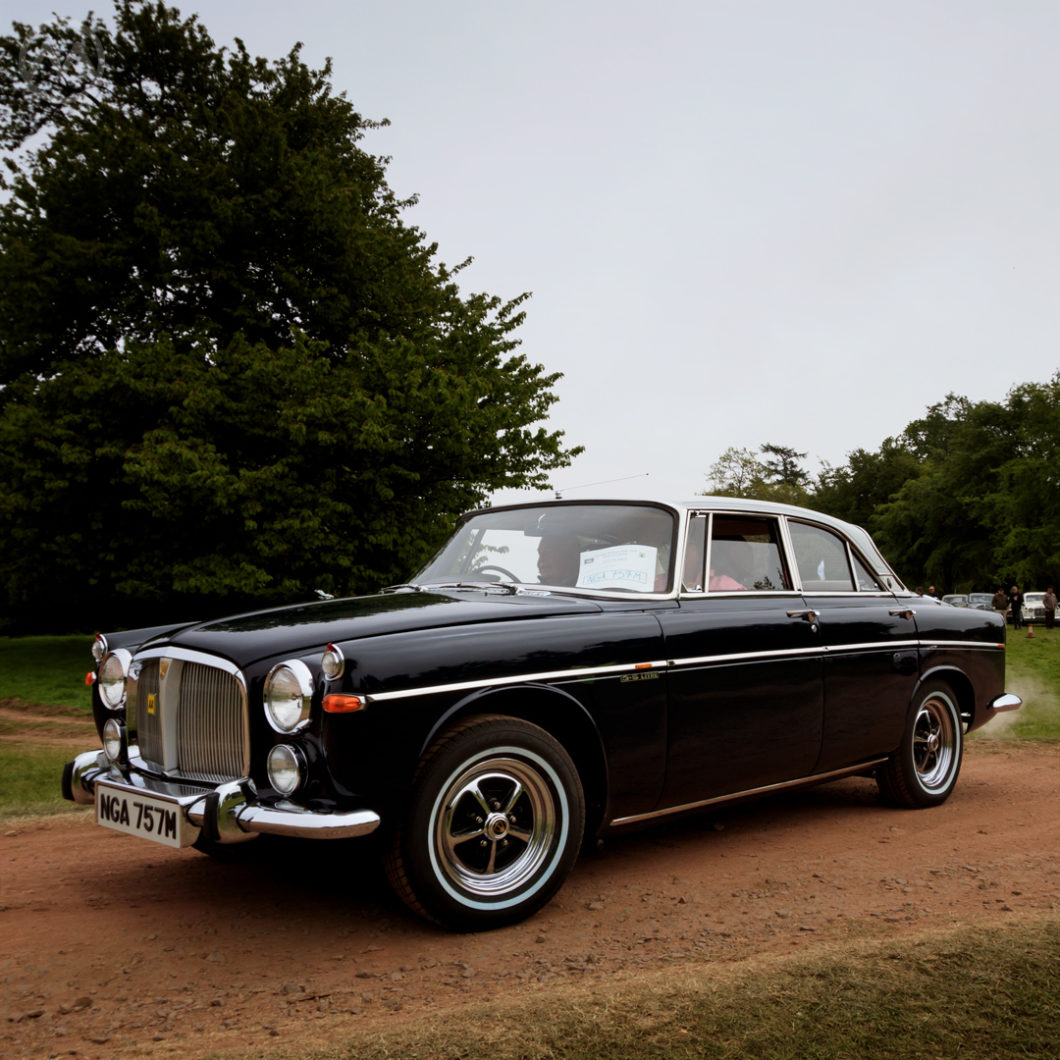The term “4-door Coupe” is overused today to the point of being meaningless, but for decades there was only one car that used this term and actually pulled it off. Rover’s P5 Coupe was an outgrowth of its circa-1958 P5. Powered by the Rover (nee Buick) V8 after 1967, the P5B was one of the best incarnations of this excellent design, beloved of MPs, the Queen, and countless executives.
The P5 itself had a lengthy gestation as the goals for the car, and Rover’s ability to pay for some of their ideas, kept changing. At first envisioned as a smaller companion to the P4 on a 103” (2.6M) wheelbase, early mock-ups from 1952/53 looked a little like a Rover-ized Alfa 1900.
Like the Citroën DS it was supposed to be a unibody with bolt-on panels. Over time, however, the car changed into a bigger, heavier unibody on a 110” (2.8M) wheelbase, not much shorter but MUCH lower than the circa-1949 P4.
A proposed V6 of various sizes and a more sophisticated rear suspension (a De Dion setup) were ultimately dropped for cost reasons. Instead the car was at first powered by Rover’s trusty straight six, bumped up to 3 liters and 7 main bearings and significantly changed internally.
The production P5, an advanced (if somewhat heavy) car designed for the 1960s despite the cuts, debuted at Earl’s Court in 1958.
THE TEAM
The development team included two of Rover’s brightest stars – Gordon Bashford planning much of the engineering and David Bache, Rover’s first real stylist. Bache had styled the P4 and would go on to style the P6 and SD1, do the production design on the Range Rover classic, and later oversaw design on several other British Leyland products (including the Metro and Maestro).
The coupe debuted in late 1962, but it was actually designed shortly after the sedan by Bache and staffer Tony Poole. Wind noise and rigidity issues nixed the original plan for a proper 4-door hardtop, and most of 1960-61 was spent refining the sedan. Power brakes and later the Hydrosteer power steering system were both added in this period to address the weight issue. All this put the coupe on the back burner.
Though the P5 is thought of today as very traditional, Rover actually hoped to somewhat modernize it’s tweedy image at the time and the Coupe was part of that. 2.5” (6.4cm) lower than the “saloon,” the Coupe looked rakish and sleek but was identical to the regular P5 below the beltine. Slim door frames and good detailing didn’t hurt.
Though often compared to drawing rooms today, P5’s designers intended them to be a blend of modern and traditional inside. They were much more thought out, ergonomically , than the P4 – and very functional.
P5’s might be the choice for MPs and execs who were driven, but the Queen drove hers.
THE V8 CONNECTION
Then came what is often described as a a chance 1965 encounter by Rover director William Martin-Hurst at Mercury Marine’s facilities in Wisconsin.
Martin-Hurst was in Wisconsin to pitch selling Mercrury Marine (no relation to Ford-Lincoln-Mercury) on buying turbines, but saw an old Buick 215 aluminum V8 at the facility. This led to a rapid negotiation with GM – Rover quickly bought the by-then discontinued engine from GM and modifying it for use in it’s own cars. The P5 was the first car to get it, for 1967.
Lighter and smaller but much more powerful than the 3L six, it transformed the P5’s responses and handling; making it a serious Jaguar rival, and possibly a higher quality one.
The stylish and fast P5B coupe was the cream of this crop, though the more conservative sedan sold better. Buyers considered it a stylish coupe, four doors or no. 9,099 P5B Coupes were made to 11,501 sedans.
Around that time Rover somewhat reluctantly merged with Leyland. Leyland’s trucks and the Standard-Triumph car portfolio dovetailed well with Rover and this arrangement pleased Rover’s old guard. However – it didn’t last. A year later Leyland merged with BMC to form British Leyland, in which higher-end Rovers were now internal rivals to Jaguar instead of just competitors.
A planned P8 (which looked more like a 1970 Chevelle than any Rover) for 1971 was delayed, then cancelled. Jaguar was often thought to be the source of Rover’s troubles here, but the P8 received very poor crash test results at the MIA facility in 1970, and this may have been to blame rather than internal competition.
The P5 continued in production until 1973 (this is one of those final-year cars) and never lost it’s air of quality – a final run-out of sedans was made for future government use and many years later Margaret Thatcher was still being driven in one.
This 1973 P5B coupe is one of the last, and was photographed at 2018’s Scottish All Rover Rally at Hopetoun House House just outside of Edinburgh.


Pingback: What Was The First Car To Use The Long-Running Rover Engine?